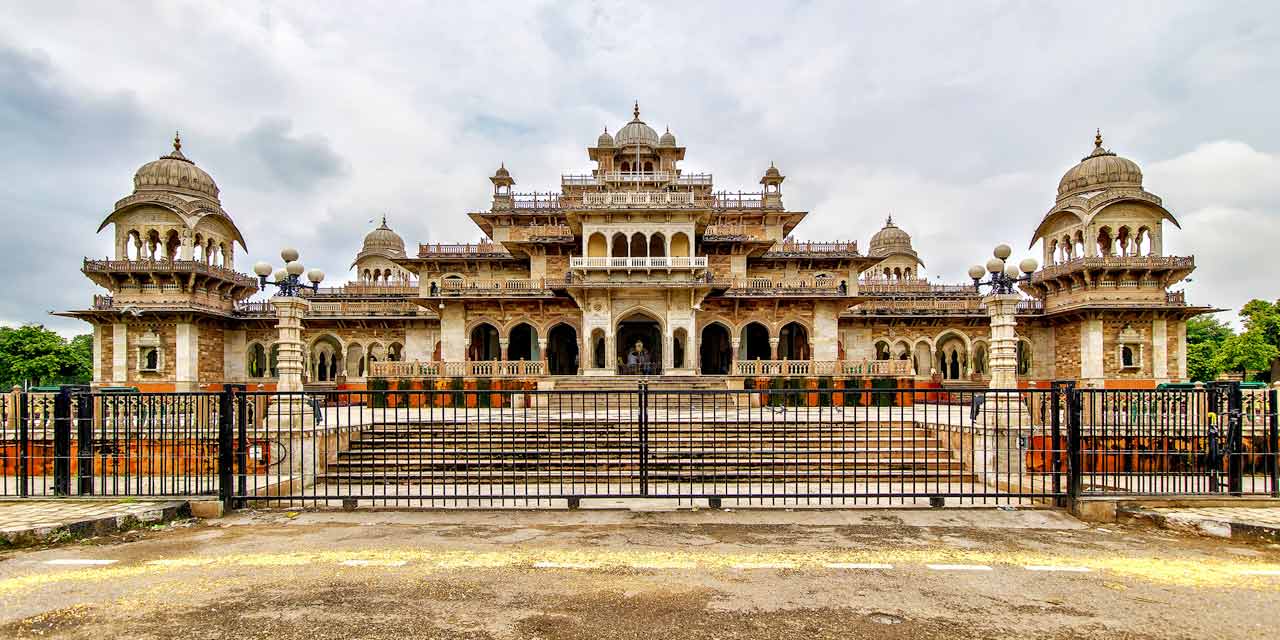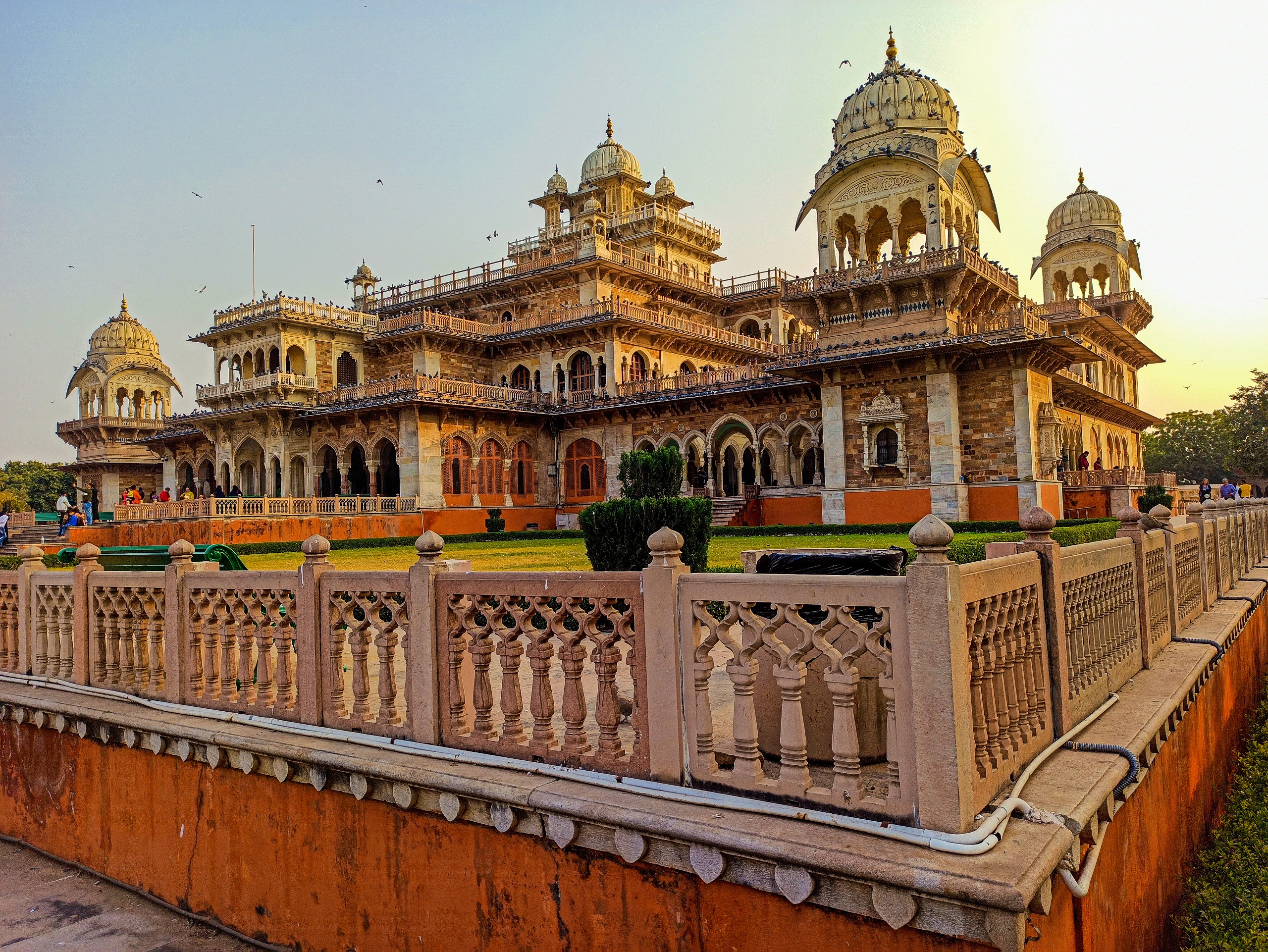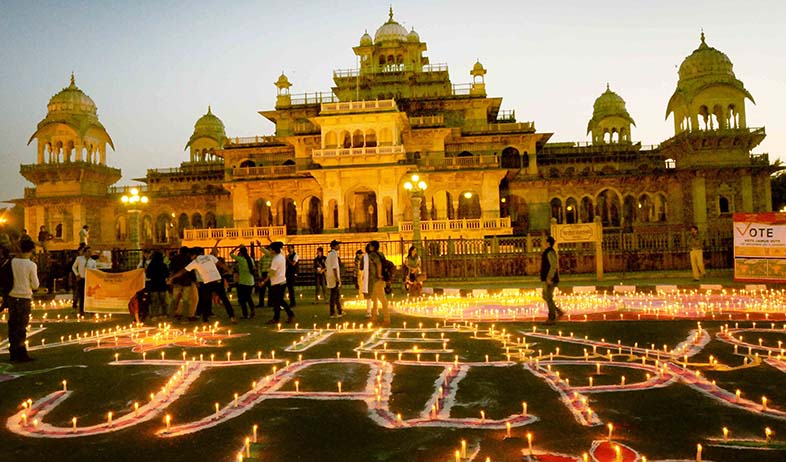The museum is housed inside the Albert Hall’s complex. The foundation of Albert Hall was laid by the Prince of Wales, Albert Edward in 1876. The building was completed in the year 1887 by the architect, Samuel Swinton Jacob. The museum collection is spread across ground and first floor and is divided under fifteen categories namely metal art, pottery, jewellery, garments & textiles, arms & armour, miniature paintings, musical instruments, clay art, sculptures, marble art, furniture & wooden art, carpet, international art, ivory, and coins.

Metal art collection includes everyday utility objects from the 19th century. The collection of arms and armour include swords, hilts, tiger knives, helmets, javelins, bows and arrows. 4th to 10th century sculptures including Shiva, Bodhisatva, Ravananugrah Murthi are on display on the ground floor. The jewellery gallery contains ornaments worn by peasants as well as the elites in the 19th century Jaipur; garments and textile gallery houses old sanganeri prints, kotadoria, bandhish work, gota work, embroidery, and lace. The Egyptian mummy from 322-30 B.C., Pharaonic antiquities from 11th-1st century B.C are part of the international art collection. The vintage pottery masterpieces from Britain, Iran, Turkey, and Japan are part of the pottery collection. Marble art gallery includes sculptures carved by Jaipur artisans during the 19th century. The carpet collection displays carpets also from the 19th century.

History of Albert Hall Museum
The building of Albert Hall Museum was built in 1876 as a concert hall. The museum gets its name from the Victoria and Albert Museum of London, because of the similarity of architecture. The foundation for the building started in 1876, when Prince of Wales visited Jaipur. When the building was constructed, the royals and government did not have any idea about usage of the building. It was initially used as Town Hall in 1880. Later, the King of Jaipur, Maharaja Sawai Madho Singh II suggested to use it as a museum for Industrial Arts. Later, the hall was used for displaying masterpieces of local artisans.
In 1881, the museum was at its prime beauty and people from across the country visited this museum to buy or enjoy handicrafts, artwork and other masterpieces. However, the building was under construction until 1887. Later, the museum started to showcase artifacts and ancient artworks along with budding artist’s masterpieces.

Architecture of Albert Hall Museum
Featuring Indo-Saracenic architecture and stone ornamentation, Albert Hall Museum became an iconic structure soon after its completion. Also, it became a great source of reference for varied classical Indian styles of design and architecture which came from Mughal to Rajput eras.
The corridors of the museum are decorated with murals in different styles. The museum has paintings from illustrations in the Persian Razmnama which were especially prepared for Emperor Akbar. In most of the murals, Chinese, European, Egyptian, Greek and Babylonian civilizations have been portrayed. There are a number of archways, courtyards and towers in the museum, which speak much about the rich architectural heritage of the country. There are many miniature paintings and portraits of the royal kings displayed in the museum.

No comments:
Post a Comment